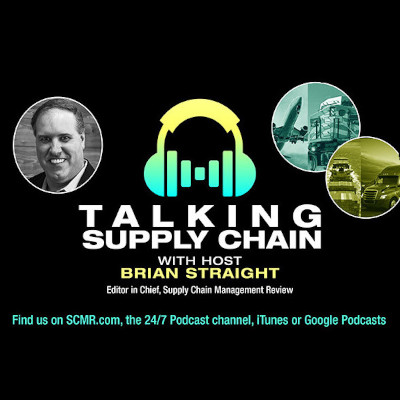Sorry, but your login has failed. Please recheck your login information and resubmit. If your subscription has expired, renew here.
January-February 2024
Back in 2019, we seemed on a consistent path to the future. Then COVID-19 arrived on the global scene, and all predictions went out the window. As 2024 begins, everyone wants to know what the year will look like. I predict continued interest in circular supply chains, cybersecurity, visibility, and digital supply chains, to name a few. But I am not alone. So, I’d like to share five things that I am particularly interested in this year. Browse this issue archive.Need Help? Contact customer service 847-559-7581 More options
In 2022, as supply chains adjusted to the COVID-19 pandemic aftershocks, even historically stable industries continued to experience significant turmoil. For example, the printing-paper supply chain experienced disarray to the point that experts and governments feared a lack of ballots would threaten the United States midterm elections. What caused such a potential calamity?
The pandemic wreaked havoc on many supply chains. This statement should come as no surprise to Supply Chain Management Review readers. Various sources that quantify the supply chain difficulties— such as the New York Federal Reserve’s Global Supply Chain Pressure Index (GSCPI)—support this claim. The GSCPI (shown below in Figure 1) shows that the peaks in the index from 2020 through 2022 are unparalleled to the beginning of the index (1998). Before the pandemic, various forms of disruption, including trade wars, changing consumer preferences, and natural disasters, had already pressured many industries. The post-pandemic environment has continued to be unstable. We use the North American printing-paper industry to illustrate pre-pandemic disruption and subsequent post-pandemic pressures. Further, through this industry, we analyze the value of agility, adaptability, and alignment (AAA) in supply chains to counter turbulence, build resilience, and weather further disruptions, which serves as a model for other industries to consider the value of AAA supply chains.
To gather a holistic picture of the printing-paper supply chain, we deployed multiple research methods. We conducted several in-depth interviews with members from various stages of the printing-paper supply chain, administered surveys (collecting qualitative and quantitative data), analyzed trade reports, and utilized quantitative data from multiple publicly available sources, including the St. Louis Federal Reserve. The printing-paper industry is rarely considered an exemplar of innovative supply chain practices. Representatives are not typically included on lists such as the Gartner top 25 (Kimberly-Clark is the only company known for paper products to have appeared in the past 10 years). While other industries rapidly adjusted to the “new normal,” the printing-paper industry has struggled. In contrast, many retailers, including grocery stores, have almost universally incorporated online orders, significantly changing their existing business model; additionally, large companies such as Nike and Home Depot deployed different ocean shipping practices such as chartering entire vessels to avoid west coast bottlenecks. In the printing-paper industry, we found examples illustrating how some firms have incorporated individual AAA capabilities to cope with difficulties. However, we have also found an industry where AAA capabilities are not widespread. We argue that AAA capabilities help mitigate negative consequences and, if AAA capabilities were more prevalent, could greatly improve the printing-paper supply industry.

This complete article is available to subscribers only.
Log in now for full access or start your PLUS+ subscription for instant access.
SC
MR
Sorry, but your login has failed. Please recheck your login information and resubmit. If your subscription has expired, renew here.
January-February 2024
Back in 2019, we seemed on a consistent path to the future. Then COVID-19 arrived on the global scene, and all predictions went out the window. As 2024 begins, everyone wants to know what the year will look like. I… Browse this issue archive. Access your online digital edition. Download a PDF file of the January-February 2024 issue.In 2022, as supply chains adjusted to the COVID-19 pandemic aftershocks, even historically stable industries continued to experience significant turmoil. For example, the printing-paper supply chain experienced disarray to the point that experts and governments feared a lack of ballots would threaten the United States midterm elections. What caused such a potential calamity?
The pandemic wreaked havoc on many supply chains. This statement should come as no surprise to Supply Chain Management Review readers. Various sources that quantify the supply chain difficulties— such as the New York Federal Reserve’s Global Supply Chain Pressure Index (GSCPI)—support this claim. The GSCPI (shown below in Figure 1) shows that the peaks in the index from 2020 through 2022 are unparalleled to the beginning of the index (1998). Before the pandemic, various forms of disruption, including trade wars, changing consumer preferences, and natural disasters, had already pressured many industries. The post-pandemic environment has continued to be unstable. We use the North American printing-paper industry to illustrate pre-pandemic disruption and subsequent post-pandemic pressures. Further, through this industry, we analyze the value of agility, adaptability, and alignment (AAA) in supply chains to counter turbulence, build resilience, and weather further disruptions, which serves as a model for other industries to consider the value of AAA supply chains.
To gather a holistic picture of the printing-paper supply chain, we deployed multiple research methods. We conducted several in-depth interviews with members from various stages of the printing-paper supply chain, administered surveys (collecting qualitative and quantitative data), analyzed trade reports, and utilized quantitative data from multiple publicly available sources, including the St. Louis Federal Reserve. The printing-paper industry is rarely considered an exemplar of innovative supply chain practices. Representatives are not typically included on lists such as the Gartner top 25 (Kimberly-Clark is the only company known for paper products to have appeared in the past 10 years). While other industries rapidly adjusted to the “new normal,” the printing-paper industry has struggled. In contrast, many retailers, including grocery stores, have almost universally incorporated online orders, significantly changing their existing business model; additionally, large companies such as Nike and Home Depot deployed different ocean shipping practices such as chartering entire vessels to avoid west coast bottlenecks. In the printing-paper industry, we found examples illustrating how some firms have incorporated individual AAA capabilities to cope with difficulties. However, we have also found an industry where AAA capabilities are not widespread. We argue that AAA capabilities help mitigate negative consequences and, if AAA capabilities were more prevalent, could greatly improve the printing-paper supply industry.
SC
MR


More Global Trade
- World Trade Centers offers a helping hand to create resilient, interconnected supply chains
- Israel, Ukraine aid package to increase pressure on aerospace and defense supply chains
- How one small part held up shipments of thousands of autos
- Shining light on procurement’s dark purchases problem
- 40% of procurement leaders ignoring sustainability, study reveals
- As Red Sea Crisis Drags On, Shippers Eye Alternatives
- More Global Trade
Latest Podcast

 Explore
Explore
Procurement & Sourcing News
- April manufacturing output slides after growing in March
- World Trade Centers offers a helping hand to create resilient, interconnected supply chains
- Bridging the ESG gap in supply chain management: From ambition to action
- Israel, Ukraine aid package to increase pressure on aerospace and defense supply chains
- How CPG brands can deliver on supplier diversity promises
- How S&OP provides the answer to in-demand products
- More Procurement & Sourcing
Latest Procurement & Sourcing Resources

Subscribe

Supply Chain Management Review delivers the best industry content.

Editors’ Picks






